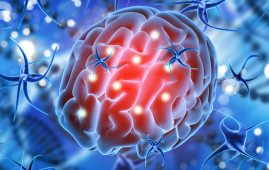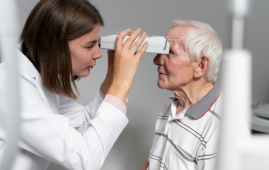

According to recent studies published in Nature Communications, researchers have discovered more than 60 previously undiscovered genetic variations linked to resting heart rate that may also raise the risk of cardiovascular disease.
“This is the largest study of its kind to-date. Besides adding to the list of variants linked to heart rate, the research provides robust causal relationships between heart rate and cardiovascular health,” said Marilyn Cornelis, Ph.D., associate professor of Preventive Medicine in the Division of Nutrition and a co-author of the study.
According to the American Heart Association, an adult’s normal resting heart rate should be between 60 to 100 beats per minute. Anything above this range is linked to a higher risk of cardiovascular disease and mortality.
In the current study, the researchers performed a genome-wide meta-analysis of data from 100 genetic studies with a total of more than 835,000 participants in order to find new resting heart rate-associated genetic variations.
This study found 68 previously unidentified genetic variants that were connected to resting heart rate among the 493 distinct genetic variants found in 352 locations. The key enrichment areas for resting heart rate genetic variations were likewise found to be cardiovascular tissues, and the expression of these variants was highest in cardiomyocytes, the heart’s contractile muscle cells.
Additional genetic analyses showed that higher genetically predicted resting heart rates reduced the risk of atrial fibrillation, ischemic stroke, and cardioembolic stroke but increased the risk of dilated cardiomyopathy, a condition in which the heart’s left ventricle enlarges and fails to pump enough blood into the body.
The risk of mortality did not appear to be correlated with resting heart rate, the scientists reported.
Overall, according to the authors, the findings advance knowledge of the relationship between genetic variants and resting heart rate and its significance in cardiovascular disease, which can guide future patient care and treatment methods.
more recommended stories
 Brain Pulsations Linked to High BMI
Brain Pulsations Linked to High BMIAccording to a new study from.
 Brain Age Estimation: EEG Advancements in Neurology
Brain Age Estimation: EEG Advancements in NeurologyTo estimate brain age using EEG.
 Unlocking Ketogenic Diet for Epilepsy Management
Unlocking Ketogenic Diet for Epilepsy ManagementExploring the Therapeutic Potential of Ketogenic.
 Senescence in Neurons: Findings
Senescence in Neurons: FindingsBased on a new study by.
 Balanced Diet Linked to Enhanced Brain Health
Balanced Diet Linked to Enhanced Brain HealthDiet and brain health are strongly.
 Acid-Reducing Drugs Linked to Higher Migraine Risk
Acid-Reducing Drugs Linked to Higher Migraine RiskIndividuals who utilize acid-reducing drugs may.
 Atrial Fibrillation in Young Adults: Increased Heart Failure and Stroke Risk
Atrial Fibrillation in Young Adults: Increased Heart Failure and Stroke RiskIn a recent study published in.
 Neurodegeneration Linked to Fibrin in Brain Injury
Neurodegeneration Linked to Fibrin in Brain InjuryThe health results for the approximately.
 DELiVR: Advancing Brain Cell Mapping with AI and VR
DELiVR: Advancing Brain Cell Mapping with AI and VRDELiVR is a novel AI-based method.
 Retinal Neurodegeneration in Parkinson’s Disease
Retinal Neurodegeneration in Parkinson’s DiseaseBy measuring the thickness of the.

Leave a Comment